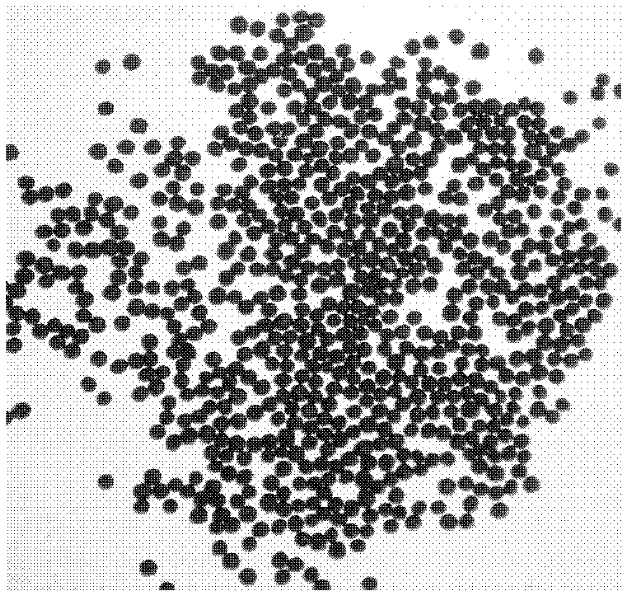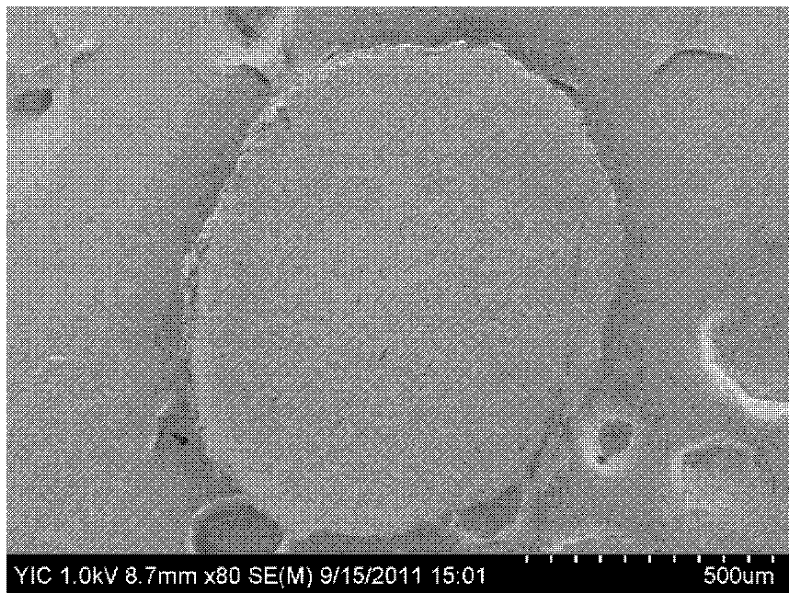Phycocyanin microcapsule and preparation method of phycocyanin microcapsule
A phycocyanin and microcapsule technology, applied in the field of food biology, can solve the problems of light, heat and acid-base sensitivity, limited development and application, poor stability, etc., and achieves the effect of simple method, low professional quality requirements, and improved stability.
- Summary
- Abstract
- Description
- Claims
- Application Information
AI Technical Summary
Problems solved by technology
Method used
Image
Examples
Embodiment 1
[0026] Preparation of phycocyanin microcapsules:
[0027] Dissolving sodium alginate in water to prepare a sodium alginate solution, making the final concentration 4-6%; dissolving phycocyanin in water to prepare a phycocyanin solution, making the final concentration 5-9%;
[0028] Mix and homogenize the above sodium alginate solution and phycocyanin solution in equal volumes, set aside;
[0029] Then adopt extrusion equipment to extrude the above-mentioned homogeneous solution to the CaCl of 2-3% (mass percentage) by extrusion method 2 In the solution, stand and solidify for 30-60min;
[0030] After the above-mentioned solidification is washed with water, it is transferred to a chitosan solution with a concentration of 1.5-2.5% prepared with 1% acetic acid solution, and the coating is shaken for 60-120 minutes; then washed with water, filtered, and freeze-dried to obtain microcapsules.
[0031] The drying process is as follows: put the microcapsules into a petri dish, freez...
Embodiment 2
[0033] Preparation of phycocyanin microcapsules:
[0034] Sodium alginate solution was prepared by dissolving sodium alginate in water so that its final concentration was 4%; phycocyanin was prepared by dissolving phycocyanin in water so that its final concentration was 5%;
[0035] Mix and homogenize the above sodium alginate solution and phycocyanin solution in equal volumes, set aside;
[0036] Then the above-mentioned homogeneous solution is extruded to 2% CaCl by extrusion using an extruder 2 In the solution, let stand to solidify for 30min;
[0037] After the above-mentioned solidification is washed with water, it is transferred to a chitosan solution prepared with a concentration of 2% and 1% acetic acid solution, and the film is shaken for 90 minutes; then washed with water, filtered, and freeze-dried to obtain microcapsules.
[0038] The drying process is as follows: put the microcapsules into a petri dish, freeze overnight in a refrigerator at -20°C, put them into ...
Embodiment 3
[0048] Preparation of phycocyanin microcapsules:
[0049] Sodium alginate solution was prepared by dissolving sodium alginate in water so that its final concentration was 5%; phycocyanin was prepared by dissolving phycocyanin in water so that its final concentration was 9%;
[0050] Mix and homogenize the above sodium alginate solution and phycocyanin solution in equal volumes, set aside;
[0051] Then the above-mentioned homogeneous solution is extruded to 3% CaCl by extrusion using an extruder 2 In the solution, stand and solidify for 60 minutes;
[0052]After the above-mentioned solidification is washed with water, it is transferred to a chitosan solution prepared with a concentration of 1.5% and 1% acetic acid solution, and the membrane is shaken for 60 minutes; then washed with water, filtered, and freeze-dried to obtain microcapsules.
[0053] The drying process is as follows: put the microcapsules into a petri dish, freeze overnight in a refrigerator at -20°C, put the...
PUM
 Login to View More
Login to View More Abstract
Description
Claims
Application Information
 Login to View More
Login to View More - R&D
- Intellectual Property
- Life Sciences
- Materials
- Tech Scout
- Unparalleled Data Quality
- Higher Quality Content
- 60% Fewer Hallucinations
Browse by: Latest US Patents, China's latest patents, Technical Efficacy Thesaurus, Application Domain, Technology Topic, Popular Technical Reports.
© 2025 PatSnap. All rights reserved.Legal|Privacy policy|Modern Slavery Act Transparency Statement|Sitemap|About US| Contact US: help@patsnap.com



